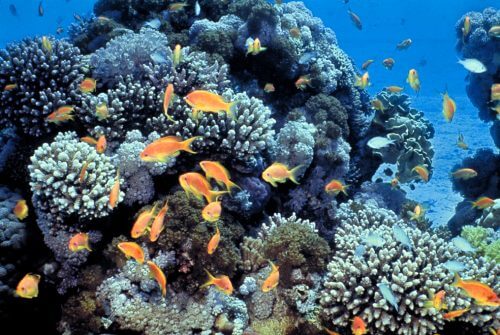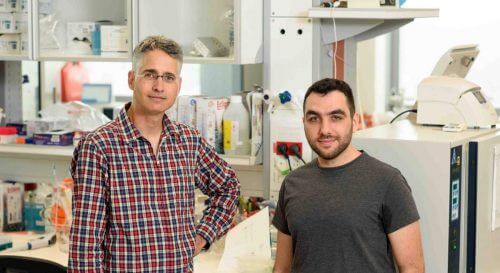Why is the marine biomass much smaller than the terrestrial one, and how do the productive marine creatures manage to "carry the burden" just as much as their counterparts on land

If we weighed all the fish in the ocean, what would their total mass be? Also add lobsters, shrimps, algae, whales and other inhabitants of seas and lakes to the account, and the result obtained will still be significantly less than the biomass of land creatures - even though land makes up only about 30% of the Earth's surface. A new marine population census, conducted by Weizmann Institute of Science scientists, offers explanations for this gap between sea and land. The census, whose findings were recently published in the scientific journal Cell, may help scientists better understand how carbon is fixed in the oceans and how climate change may affect marine biomass.
The marine survey, led by research student Yanon Bar-On from the laboratory of Prof. Ron Milo in the Department of Plant and Environmental Sciences, is the result of a large-scale project in which the researchers quantified the biomass of all life on Earth. One of the surprising discoveries that emerged from this comprehensive census was that productive creatures - that is, those that produce the energy they need through photosynthesis - make up the vast majority of the biomass on Earth, but their share in the marine biomass is much smaller. In the new study, Bar-On and Prof. Milo dived into the depths of the data and discovered that the basic division of living things into "producers" and "consumers" is much more fluid in the sea than on land. Thus, for example, among bacteria and protists (creatures that constitute a kingdom in itself alongside plants, animals and fungi) there are photosynthetic species, i.e. producers, and many species that are not. When the researchers sorted the marine producers into three groups - bacteria, plants and protists - they discovered that the first place in biomass was shared by the photosynthetic protists with the plants, while the photosynthetic bacteria came only in third place. Bottom line, all the types of producers together make up only about 20% of the marine biomass, while the productive plant kingdom makes up 95% of the terrestrial biomass.
Among the animals, which make up about 30% of the marine biomass, the Crustacea stand in first place, a group in addition to shrimps, crabs and lobsters, also includes the shrimp-like krill species and the tiny Copepoda, which are an important link in the marine food chain, For they feed on tiny photosynthetic creatures and are eaten by all the others. Fish, from sardines to sharks, and marine mammals such as whales make up another significant part of the marine biomass.
These findings show that in contrast to the food "pyramid" on land, which has plants at its base and consumers such as humans at its apex, whose total mass is much smaller than that of the producers, the food pyramid in the oceans is more reminiscent of a spiral shape: its narrow base consists of producers, and its middle part is wider and consists of creatures such as Krills and gastropods that feed on the producers at the base of the spinner. It can also be said that, similar to a spinner, these producers compensate for their disadvantage in the biomass arena through rapid rotational movement: they grow, multiply and die at such a rapid rate, compared to plants on land, that the support they provide to creatures higher up the food chain is far greater than their relative weight at any given moment. This is also the reason why, despite the fact that they constitute a fraction of the biomass, the producers of the oceans are large "eaters" of carbon dioxide. In fact, they fix an equal amount of carbon dioxide to that fixed by land plants, and they release the same amount of oxygen into the atmosphere.
On land, greater mass allows plants to grow taller, a fact that gives them an advantage over shorter competitors. In the ocean, on the other hand, small and light creatures that float close to the surface have better access to sunlight."

Differences between sea and land, the researchers believe, may stem from the challenge that all productive creatures face: the competition for sunlight. On land, the mass allows plants to grow taller, a fact that gives them an advantage over shorter competitors. In the ocean, however, small and light creatures that float close to the surface have better access to sunlight.
Producer creatures - that is, those that produce the energy they need through photosynthesis - make up the vast majority of the biomass on Earth, but their share in the marine biomass is much smaller."
How will the census help to better understand what the future holds for the oceans? "Predicting the future requires a good understanding of the present, especially in light of the fact that we are only now beginning to understand the full impact of man on the oceans," says Prof. Milo. "We hope that the research will make it possible to make more informed decisions that affect the 'services' that marine creatures provide to our planet - starting with food and ending with the impact on the air we breathe."

One response
It sounds strange that 20 percent of the biomass is able to produce enough energy for the other 80 percent